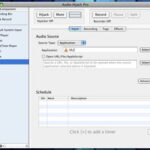My partner was in his last months of audio engineering school when he asked me to go to the bookstore and buy Pro Tools All-In-One Desk Reference for Dummies. He was about to start his in studio practical and wanted an easy to use reference book to study while he produced his final project. I didn’t know what I was buying when I walked into the book box store, so I went to a sales person and asked to be pointed in the right direction.
I’ve always been a fan of the For Dummies and Idiots Guide To series, and I was overwhelmed when I saw my first New York City size collection of said reference books. There were walls of them. Rows of them. And they were on every subject under the sun. After the correct amount of procrastination, I found the one I was looking for and was surprised to find myself holding a 684 page $30 book on ProTools. We were poor college kids living in the city and the price tag was large for our budget, but the cover flashed “Eight quick reference guides – one great price!” So I bought it. Besides, it was what he wanted.
My partner was happy when I brought the book home, and his nose was buried in its dog eared pages for the remainder of the semester. A number of his notes fluttered to the ground when I opened the book to write this review. While he has chosen Cubase as his preferred audio software, Pro Tools for Dummies has not sat on his reference shelf collecting dust.
Separated into 8 books, book 1, Home Recording Basics, taught users how to set up their studio and the basics of the mixing board. It spoke about microphone placement and understanding MIDI equipment. Book 2, Getting Started Using Pro Tools, served as an introduction to the audio software. Book 3, Recording Audio, covered recording audio, setting up tracks, and the basics of mixing. Book 4, Editing Audio, was the most focused chapter of the book. It showed users, step by step, how to edit their audio recording in ProTools.
Book 5, Managing MIDI, was all about preparing, recording, editing, and performing MIDI operations. Books 6, and 7, Mixing and Mastering in Pro Tools, prepared users for mixing and mastering. These 2 chapters went beyond technical software support and talked to the reader as an artist. It reminded them that they needed to put on a “producers hat” for this part of the work and to separate themselves from the artistic attachment they felt for their work. Book 8, Getting Your Music Out to the Masses, was a great tool for self producing musicians and gave many 3rd party sources for selling the music they’d created with the software. My partner had a problem with the final 3 chapters of Pro Tools for Dummies. He bought the book as an audio engineer, not as an artist, and found this part of the book to be excluding to his vocation.



